Recent Posts
Safeguarding Your Property: Fire Restoration Insights and Prevention Tips
12/17/2024 (Permalink)
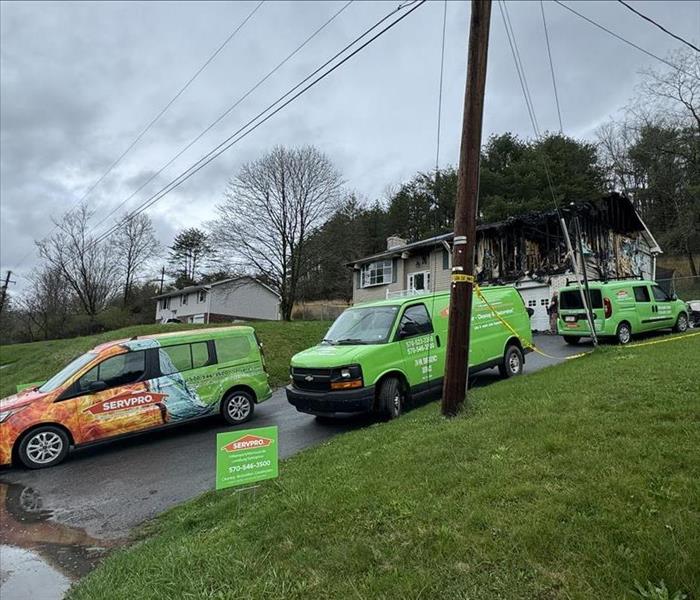 SERVPRO team restoring a residential fire
SERVPRO team restoring a residential fire
Safeguarding Your Property: Fire Restoration Insights and Prevention Tips
This year, our team at SERVPRO® of Williamsport Montoursville and Lewisburg Selinsgrove has worked tirelessly to help dozens of homeowners and business owners recover from the devastating effects of fire. It’s our mission to restore properties and peace of mind after such traumatic events. But as much as we are here to help rebuild, we are even more passionate about helping you prevent fires from happening in the first place.
Lessons Learned from Fire Restoration
Every fire we’ve restored this year has taught us something new about safety, preparedness, and resilience. One thing remains constant: fires are unpredictable and can happen to anyone. The emotional and financial toll of fire damage is immense, but the good news is that many fires are preventable. Taking proactive steps now can make all the difference in keeping your loved ones and property safe.
Are Your Smoke Detectors Ready to Save Lives?
Smoke detectors are your first line of defense against fires. According to safety experts, you should have at least one smoke detector in every bedroom and on every level of your home. However, having the devices isn’t enough; they need to be maintained. Here’s how to ensure your smoke detectors are working properly:
- Test them monthly. Press the test button to ensure the alarm is functioning.
- Replace the batteries twice a year. A good reminder is to do this when you adjust your clocks for daylight saving time.
- Upgrade if necessary. If your smoke detectors are more than 10 years old, replace them to ensure reliability.
Develop and Practice a Family Fire Escape Plan
A fire escape plan can save lives, but only if everyone in your household knows and practices it. Here’s how to create a plan:
- Map out your exits. Identify at least two ways out of every room in your home, typically a door and a window.
- Check your windows. Ensure that all windows can be opened easily and aren’t painted shut or obstructed.
- Designate a meeting spot. Choose a safe location outside your home where everyone can gather.
- Practice regularly. Conduct fire drills with your family at least twice a year. Make sure everyone knows how to open windows and use escape ladders if needed.
- Teach fire safety. Discuss with family members how to stay low to the ground to avoid smoke and how to test doors for heat before opening them.
Protect Your Property and Loved Ones
While we hope you never have to face the aftermath of a fire, we are always here to help if you do. From smoke damage restoration to complete structural rebuilding, [Your Restoration Company Name] is your trusted partner in recovery.
Let’s work together to prevent fires and keep our community safe. Take time this week to check your smoke detectors, review your family escape plan, and ensure your home is as fire-ready as possible. A few minutes of preparation today can save lives and prevent heartache tomorrow.
If you’d like more fire prevention tips or have questions about our fire restoration services, contact us anytime. Together, we can safeguard your home, business, and loved ones.
Recovering After a Home Fire: Crucial Mitigation Steps and the Value of Professional Restoration
11/18/2024 (Permalink)
Recovering After a Home Fire: Crucial Mitigation Steps and the Value of SERVPRO® Professional Restoration
Experiencing a home fire is a traumatic event, often leaving homeowners feeling overwhelmed by the physical and emotional aftermath. Knowing the key steps to take immediately after the fire can significantly impact the speed and success of recovery. One of the most critical decisions during this process is choosing a professional restoration company, especially one experienced in navigating insurance claims. Here's why.
Immediate Steps After a Fire
Ensure Safety First
Once the fire is extinguished, ensure everyone is safe and accounted for. Avoid entering the property until the fire department deems it safe to do so. Structural damage or lingering hazards, such as smoke and ash, can pose significant risks.
Contact Your Insurance Company
Notify your insurance provider as soon as possible. Initiating a claim early helps streamline the process of assessing damages and arranging for coverage.
Document the Damage
If it's safe to enter your home, take photographs and videos of the affected areas to document the damage. This documentation is essential for insurance claims and helps ensure proper compensation for losses.
Prevent Further Damage
Fires can leave properties vulnerable to secondary damages such as water intrusion (from firefighting efforts) and mold growth. Tarping roofs, sealing windows, and removing standing water are essential measures to prevent further harm to your home.
The Role of Professional Restoration Companies
While it may be tempting to tackle some tasks on your own, working with a professional restoration company offers several key benefits:
Specialized Expertise
Fire damage isn’t just about burnt walls and furniture—it includes hidden issues like smoke odors, soot residue, and water damage. Restoration professionals use advanced equipment and techniques to address these problems comprehensively, ensuring a safe and thorough cleanup.
Efficient Recovery
Time is critical when dealing with fire damage. Restoration companies can rapidly assess the situation and deploy resources to mitigate the effects of the fire, reducing the risk of further structural or environmental damage.
Insurance Coordination
Dealing with insurance claims can be daunting. Professional restoration companies experienced in insurance coordination act as advocates for homeowners, ensuring all necessary documentation is submitted and claims are processed efficiently. Their familiarity with insurance policies can also help identify additional coverage opportunities, potentially reducing out-of-pocket expenses.
Stress Reduction
The aftermath of a fire can be emotionally draining. Having a trusted team manage the restoration process allows homeowners to focus on personal recovery and rebuilding their lives.
Why Expertise Matters
Choosing SERVPRO with proven expertise ensures your home is restored to its pre-fire condition with minimal complications. These professionals know how to handle both the technical aspects of restoration and the bureaucratic challenges of insurance claims, providing peace of mind during a stressful time.
In conclusion, after a home fire, every decision matters. Prompt action, coupled with the support of an experienced restoration company, can make the recovery process smoother, faster, and less stressful. Prioritize safety, act swiftly, and trust the professionals to help rebuild your home and your sense of security.
Why do home owner and business owners use SERVPRO®
11/11/2024 (Permalink)
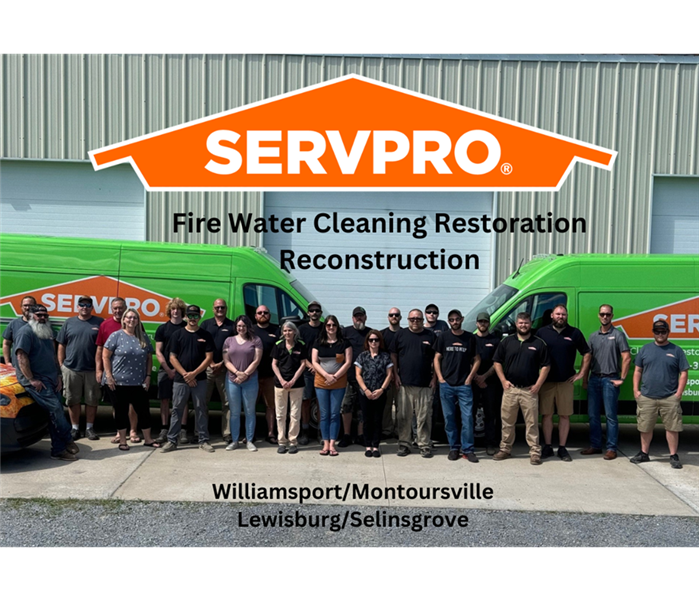 SERVPRO Team of Williamsport/Montoursville, Lewisburg/Selinsgrove
SERVPRO Team of Williamsport/Montoursville, Lewisburg/Selinsgrove
When disaster strikes—whether it's a flood, fire, storm damage, or mold infestation—choosing the right restoration company is essential to getting life back to normal quickly and efficiently.
SERVPRO® is a trusted name in restoration services for both businesses and homeowners across the country, and there are several compelling reasons to consider them for any restoration needs.
One of SERVPRO's standout qualities is its rapid response time. Disasters don’t wait, and neither does SERVPRO; they operate 24/7, with teams ready to respond quickly to minimize damage. Speed is critical in situations like water or fire damage, as delays can lead to further deterioration, mold growth, or structural weakening. SERVPRO’s fast response helps reduce these risks and makes recovery smoother and more manageable.
Another advantage of choosing SERVPRO is their expertise and training. SERVPRO technicians are highly trained and certified in a wide range of restoration and cleaning techniques, ensuring that the job is done right. They bring advanced equipment and techniques that restore homes and businesses to pre-disaster conditions. Additionally, SERVPRO follows strict protocols and safety measures to keep everyone safe and informed throughout the restoration process.
SERVPRO also understands the financial and emotional strain of restoration. They work closely with insurance companies to streamline claims, reducing the burden on the property owner. This cooperative approach not only eases communication but also helps clients receive timely support. With decades of experience, specialized tools, and a customer-centered approach, SERVPRO is an excellent choice for anyone seeking reliable, expert restoration services.
Windows in the Storm: Safeguarding Your Home Against Wind and Debris
12/12/2023 (Permalink)
As the wind howls and debris dances through the air during a storm, your windows stand as the first line of defense for your home. Proper preparation is essential to protect against the potential damage caused by high winds and flying debris. In this blog, we'll explore effective strategies to fortify your windows and ensure your home remains a safe haven during stormy weather.
Install Storm Shutters
Storm shutters are a robust and effective solution for protecting windows during storms. They act as a physical barrier against wind and debris, preventing them from making direct contact with your windows. Choose from various types, including accordion, roll-down, or panel-style shutters based on your preferences and budget.
In the absence of storm shutters, plywood is a cost-effective alternative for window protection. Pre-cut plywood panels can be installed quickly over windows when a storm is imminent. Ensure the plywood covers the entire window, extending beyond the frame, and use appropriate fasteners to secure it in place.
Impact-Resistant Windows
Investing in impact-resistant windows can provide long-term protection against wind and debris. These windows are constructed with laminated glass or a combination of laminated glass and impact-resistant film, making them more resistant to shattering upon impact.
Window film, also known as safety film or security film, can be applied to existing windows to reinforce them against impact. This transparent film adds an extra layer of protection, holding shattered glass together and preventing it from scattering in case of breakage.
Install Storm Windows
Storm windows are designed to offer an additional layer of insulation and protection against the elements. While they may not be as robust as shutters, they can still provide a barrier against wind and debris, helping to minimize the risk of window damage.
Protective screens made from materials like steel or aluminum mesh can be installed over windows to shield against flying debris. These screens are especially effective in coastal areas prone to high winds and hurricanes.
Trim Trees and Branches
Before storm season arrives, ensure that nearby trees and branches are trimmed and pruned. This minimizes the risk of branches breaking off and crashing into windows during strong winds. Regular tree maintenance is an essential preventive measure.
When replacing windows, opt for models specifically designed to withstand high winds and impact. Additionally, choose sturdy window frames, such as those made of aluminum or vinyl, to enhance overall resilience.
Consider Hurricane Film
Hurricane film, a type of window film specifically designed for high-wind situations, provides an extra layer of protection against strong winds and debris impact. It adheres directly to the glass, reinforcing the window's structural integrity.
As a proactive measure, secure outdoor furniture, gardening tools, and other potential projectiles. These items, if picked up by strong winds, can become projectiles that may damage windows and other parts of your home. Just like windows, garage doors are vulnerable to high winds and flying debris. Strengthen them by installing a garage door bracing kit or reinforcing existing doors to minimize the risk of damage.
Create a Home Emergency Kit
In addition to fortifying your windows, ensure you have a home emergency kit prepared. This should include essential items such as flashlights, batteries, a first aid kit, blankets, and non-perishable food and water.
Regularly monitor weather forecasts and stay informed about potential storms in your area. Being aware of approaching severe weather allows you to take timely action to protect your windows and secure your home.
Seek Professional Advice
If you're unsure about the best approach to protect your windows, consult with a professional. Window and home improvement experts can assess your specific situation and recommend the most suitable measures for your home.
Protecting your windows from wind and debris during a storm is a crucial aspect of ensuring your home's safety and resilience. By employing a combination of protective measures, you can fortify your windows against the elements, providing peace of mind and security for you and your family during stormy weather.
Ensuring Safety: The Importance of Fire Drills in Schools and Public Buildings
11/21/2023 (Permalink)
Fire safety is a critical aspect of ensuring the well-being of individuals in schools and public buildings. Fire drills play a vital role in preparing students, staff, and visitors for emergency situations, and their importance cannot be overstated. In this blog, we will discuss the significance of fire drills in schools and public buildings and highlight how these drills contribute to creating safer environments.
Promoting Preparedness
Fire drills provide an opportunity for students, staff, and visitors to practice and familiarize themselves with the necessary actions to take in the event of a fire. By conducting regular drills, individuals gain a deeper understanding of evacuation routes, assembly points, and emergency procedures. This knowledge fosters preparedness and empowers people to respond effectively and calmly during an actual emergency.
Raising Awareness
Fire drills serve as an educational tool, raising awareness about fire safety and prevention. Participants become more knowledgeable about fire extinguishers, fire alarms, and other safety equipment, as well as how to identify potential fire hazards in their surroundings. By actively engaging in fire drills, individuals develop a heightened sense of responsibility to maintain a fire-safe environment.
Testing Evacuation Plans
A properly executed fire drill allows educational institutions and public buildings to assess the effectiveness of their evacuation plans. It provides an opportunity to identify any potential flaws or bottlenecks in the evacuation process and make necessary adjustments. Regular drills also allow for the evaluation of staff and student response times, ensuring that evacuation procedures can be carried out swiftly and efficiently.
Building Confidence
Fire drills help alleviate anxiety and fear associated with emergencies by building confidence in individuals. Familiarity with the evacuation process and knowing what steps to take in a fire emergency empowers participants to remain calm, make rational decisions, and assist others during a crisis. This confidence significantly contributes to their overall safety and well-being.
Reinforcing Safety Protocols
Fire drills reinforce safety protocols and emphasize the importance of following established procedures. This includes ensuring that individuals understand the significance of not using elevators during a fire, closing doors to prevent fire spread, and reporting emergencies promptly. Regular drills serve as reminders of these critical protocols, making them second nature rather than a panicky response during an actual fire event.
Collaborative Learning Experience
Fire drills create a collaborative learning experience, allowing schools and public buildings to gather feedback from participants. This feedback can lead to improvements in evacuation plans, signage, or communication systems, further enhancing overall safety. In addition, fire drills provide an opportunity for individuals to share their experiences, ask questions, and enhance their understanding of fire safety practices.
In conclusion, fire drills in schools and public buildings are essential for ensuring the safety and well-being of everyone present. They promote preparedness, raise awareness about fire safety, and allow for the assessment and refinement of evacuation protocols. By actively conducting fire drills, educational institutions and public buildings can instill a culture of safety, empower individuals to respond effectively during emergencies, and ultimately create a secure environment for all.
Mold in Vacation Homes: Prevention for Seasonal Properties
10/24/2023 (Permalink)
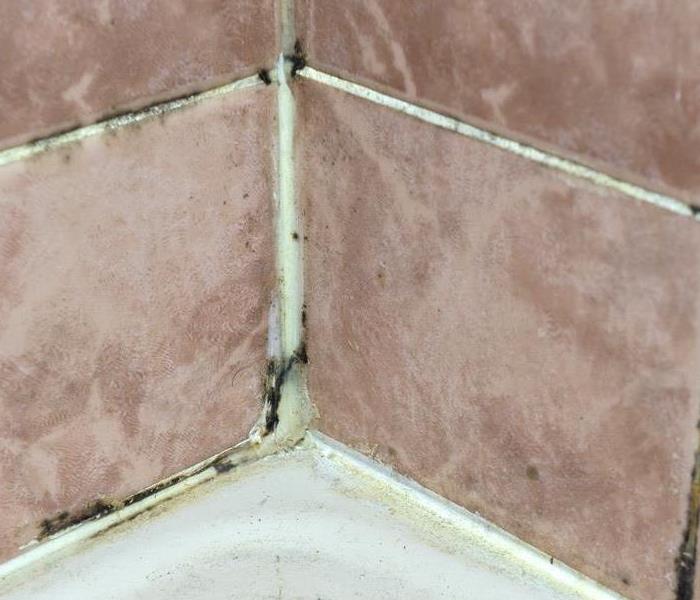 Controlling moisture in your vacation home while away is crucial to prevent mold and mildew to grow.
Controlling moisture in your vacation home while away is crucial to prevent mold and mildew to grow.
Owning a vacation home provides a retreat from the daily grind, but the lack of year-round occupancy can create a conducive environment for mold growth. Mold thrives in damp and stagnant conditions, making seasonal properties vulnerable to infestations. In this blog, we will explore effective prevention strategies for mold in vacation homes, ensuring a clean and comfortable environment for your getaway.
Control Moisture and Humidity
Moisture control is crucial in preventing mold growth in vacation homes. Before closing up your property, thoroughly inspect for any leaks or signs of water damage and promptly repair them. Ensure that the property is properly sealed and insulated to prevent moisture intrusion. Installing a dehumidifier can help control humidity levels during periods of vacancy, preventing excess moisture buildup. Additionally, consider leaving the blinds or curtains open to allow natural light and airflow, as sunlight can inhibit mold growth. By actively managing moisture and humidity, you can greatly reduce the risk of mold in your vacation home.
Clean and Dry Thoroughly
Thorough cleaning and drying are essential steps in preventing mold growth in seasonal properties. Before closing up for the season, deep clean all surfaces, including furniture, carpets, and bathrooms. Pay special attention to areas prone to moisture, such as bathrooms and kitchens. Ensure all surfaces are completely dry before sealing the property, as even small amounts of residual moisture can promote mold growth. If any water damage occurs during the season, address it promptly and thoroughly dry the affected area to prevent mold from taking hold. Regular cleaning and drying practices will help keep your vacation home mold-free.
Ventilate the Property
Proper ventilation plays a vital role in mold prevention for vacation homes. When closing up the property, open windows and doors to allow for air circulation and prevent stale air from becoming trapped inside. Consider using fans or leaving ceiling fans on a low setting to promote airflow during the off-season. If the property has a ventilation system, check that it is functioning properly and clean or replace filters as necessary. Adequate ventilation minimizes the accumulation of moisture and helps create an inhospitable environment for mold growth.
Regular Inspections and Maintenance
Regular inspections and maintenance are key to preventing mold growth in vacation homes. Schedule routine check-ups before and after each season to identify any signs of water damage, leaks, or areas of excessive humidity. Inspect the property's roof, gutters, and plumbing system for any issues that may lead to moisture problems. Additionally, monitor the property during the off-season for any signs of mold growth or musty odors. Promptly address any maintenance or repair needs to prevent further moisture infiltration and mold development. By staying vigilant and proactive, homeowners can catch and resolve potential mold issues before they become significant problems in their vacation homes.
Preventing mold in vacation homes requires proactive measures to manage moisture and ensure proper ventilation. By controlling moisture and humidity, thoroughly cleaning and drying the property, and promoting air circulation, homeowners can avoid the unpleasant surprise of mold infestations in their seasonal properties. Implementing these preventive strategies will help preserve the cleanliness and integrity of your vacation home for years to come.
Understanding the Risks After Flooding
10/21/2023 (Permalink)
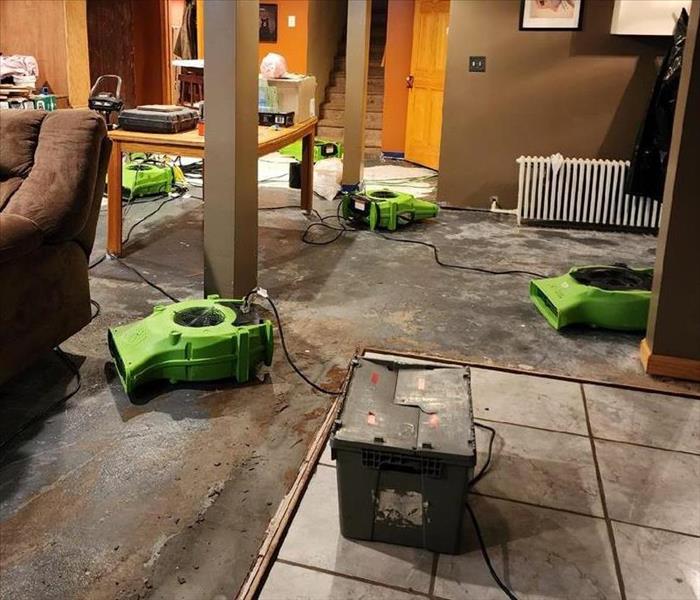 By taking these steps, you can stay safe and minimize the risks associated with flooding.
By taking these steps, you can stay safe and minimize the risks associated with flooding.
Flooding is one of the most severe natural disasters, with the potential to cause significant damage to homes, businesses, and infrastructure. In addition to the immediate dangers that floodwaters pose, there are also risks that must be considered in the aftermath. In this blog post, we will explore the risks associated with flooding and discuss ways to stay safe during and after a flood.
Safety Risks Associated with Flooding
- Electrical hazards: Floodwaters can pose electrical hazards, such as downed power lines in or near the water.
- Slip and fall hazards: Floodwaters and debris can create slip and fall hazards, especially in areas where the water has receded.
- Structural damage: Flooding can cause significant structural damage to buildings, infrastructure, and roads, leading to collapses, sinkholes, and other dangerous situations.
- Fast-moving water: If you are caught in fast-moving water, the force of the water can sweep you away, leading to drowning or other serious injuries.
Ways to Stay Safe During and After a Flood
Stay on top of the latest updates on the weather and flooding conditions by monitoring local news channels or the National Weather Service. If an evacuation order is given, follow it immediately- do not wait. Delaying can put you and your loved ones in danger.
Avoid walking or driving through floodwaters. Floodwaters can be much deeper than they appear, and you may be at risk of being swept away by moving water. Additionally, floodwaters may contain dangerous debris, obstacles, and animals.
Don't touch electrical equipment
Do not touch electrical equipment, such as downed power lines. Wash your hands frequently if you come into contact with floodwaters or items that have been in contact with floodwaters.
After the flood, conduct a thorough check of your property for any safety hazards, such as structural damage or electrical outages.
Flooding is a devastating natural disaster that can leave a trail of destruction in its wake. From property damage to health hazards, the risks associated with flooding are numerous and require the utmost attention. It is crucial to understand the dangers that arise after a flood and take necessary precautions to stay safe. Whether it's avoiding contact with contaminated water, wearing protective gear, or seeking professional help for debris removal, staying informed and vigilant in the aftermath of a flood is essential for safeguarding ourselves and our communities.
By prioritizing safety and taking proactive measures, we can bounce back stronger and minimize the risks posed by flooding. Flooding can be a life-threatening situation if you don't take the proper precautions. Remember to stay informed, follow evacuation orders, avoid floodwaters, watch for electricity hazards, practice good hygiene, and check for safety hazards. By taking these steps, you can stay safe and minimize the risks associated with flooding.
How to Protect Windows from Wind and Debris During Storms
9/17/2023 (Permalink)
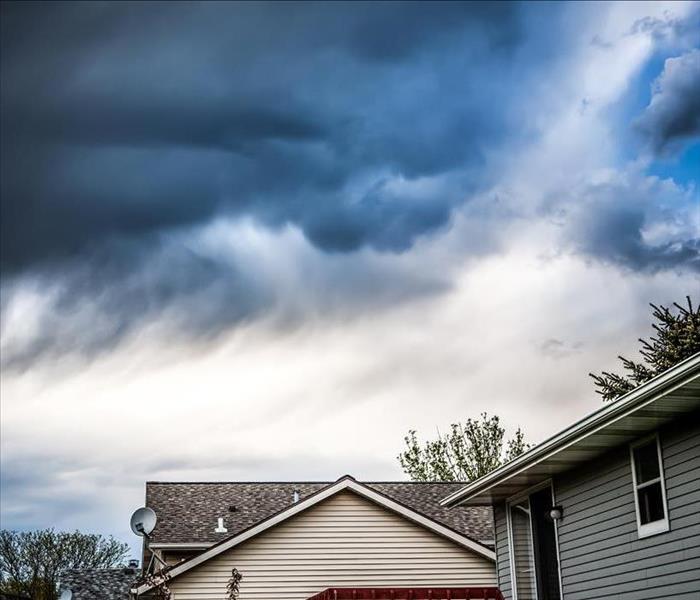 As a homeowner or property owner, protecting your windows during storms is essential.
As a homeowner or property owner, protecting your windows during storms is essential.
As a homeowner or property owner, safeguarding your windows during storms is essential to protect your property and ensure the safety of your loved ones. High winds and flying debris pose a significant threat to windows, leaving your home vulnerable to damage. In this blog, we'll explore practical and effective methods to secure your windows and fortify them against the forces of nature during storms.
Reinforce with Storm Shutters
Storm shutters are a highly effective way to shield your windows from wind and flying debris. These durable and impact-resistant shutters act as a barrier, preventing strong winds from exerting excessive pressure on the glass. There are various types of storm shutters available, including roll-down, accordion, and panel-style shutters, offering flexibility and convenience in their operation.
Install Impact-Resistant Windows
Investing in impact-resistant windows can provide long-term protection for your home. These windows are designed with multiple layers of glass and a shatter-resistant interlayer, making them highly resistant to impacts from debris and high winds. Impact-resistant windows not only safeguard your property during storms but also offer added security and energy efficiency benefits.
Use Plywood or Board-Up
In situations where storm shutters or impact-resistant windows are not available, using plywood or board-up is a temporary yet effective solution. Before the storm arrives, cut plywood or acquire precut boards to fit your window openings. Secure the plywood or boards over the windows using appropriate screws or nails. While this method may not be as convenient as permanent solutions, it provides a valuable layer of protection during emergencies.
Install Window Film
Window film can be applied to existing windows as an additional measure to reinforce them against wind and debris. Security window film is designed to hold shattered glass together, reducing the risk of glass fragments flying into your home during a storm. While window film does not provide the same level of protection as storm shutters or impact-resistant windows, it offers a cost-effective option to enhance window safety.
Trim Surrounding Trees and Branches
Before the storm season, ensure trees and branches surrounding your home are well-trimmed. Overhanging branches can become dangerous projectiles during strong winds, causing significant damage to windows and other parts of your property. Regularly prune trees to reduce the risk of branches hitting your windows during storms.
Secure Outdoor Objects
Secure or relocate outdoor objects, such as patio furniture, potted plants, and lawn decorations, before a storm hits. These items can become dangerous projectiles during high winds, potentially causing severe damage to your windows and property. Storing outdoor objects in a safe location or anchoring them securely can prevent them from being blown into your windows.
Protecting your windows from wind and debris during storms is crucial to safeguarding your property and ensuring the safety of your loved ones. Consider investing in storm shutters or impact-resistant windows for long-term protection. In the absence of these options, temporary solutions like plywood or board-up can provide valuable protection during emergencies. Additionally, window film and regular tree trimming contribute to fortifying your windows against storm-related hazards. By taking proactive measures and securing your windows, you can face storms with confidence and minimize potential damage to your home and property.
The Importance of Hiring a Certified Water Damage Expert
7/27/2023 (Permalink)
Water damage can be a homeowner's worst nightmare, causing extensive property damage, mold growth, and secondary damages. When faced with water damage, it's crucial to enlist the help of a certified water damage expert. These professionals possess the knowledge, skills, and equipment necessary to handle water-related emergencies effectively. In this blog post, we'll discuss the importance of hiring a certified water damage expert and the benefits they bring to the restoration process.
Expertise in Water Damage Assessment
Certified water damage experts have undergone specialized training and certification programs that equip them with a deep understanding of water damage and its impact on different types of materials and structures. They possess the expertise to assess the extent and severity of water damage, identify hidden moisture, and determine the appropriate restoration techniques.
Time is of the essence when dealing with water damage. The longer water sits and moisture remains, the higher the risk of structural damage and mold growth. Certified experts understand the importance of a prompt response. They have the necessary equipment and techniques to extract water, dry the affected areas, and mitigate further damage. Their quick action can significantly reduce the overall restoration time and minimize the potential for additional problems.
Comprehensive Restoration Solutions
Water damage can affect various aspects of your home, including walls, floors, ceilings, furniture, and personal belongings. Certified water damage experts offer comprehensive restoration solutions that encompass all these areas. They have the knowledge and experience to handle different materials and surfaces, ensuring a thorough and effective restoration process.
One of the significant risks associated with water damage is the potential for mold growth. Mold can begin to develop within 24 to 48 hours after water exposure. Certified experts understand the signs of mold growth, the necessary precautions to prevent its spread, and effective remediation techniques. They employ specialized equipment, such as air movers and dehumidifiers, to create an environment that discourages mold growth and ensures a safe and healthy living space.
Proper Equipment and Techniques
Certified water damage experts are equipped with state-of-the-art tools and equipment specifically designed for water extraction, drying, and restoration. They have access to moisture meters, thermal imaging cameras, industrial-grade dehumidifiers, and air movers that aid in identifying hidden moisture, promoting efficient drying, and restoring affected areas to their pre-damage condition. Their expertise in using these tools ensures optimal results and minimizes the risk of further damage.
Insurance Claim Assistance
Dealing with water damage can be overwhelming, especially when it comes to filing insurance claims. Certified water damage experts are well-versed in working with insurance companies. They can document the damage, provide detailed reports, and assist in navigating the claims process. Their knowledge and experience can help ensure a smooth and successful insurance claim, maximizing the chances of receiving fair compensation for the damage incurred.
Hiring a certified water damage expert provides peace of mind during a stressful time. These professionals have the necessary training and certifications to handle potentially hazardous situations safely. They prioritize your safety and the well-being of your property, adhering to industry standards and following proper protocols throughout the restoration process.
When faced with water damage, enlisting the services of a certified water damage expert is essential. Their expertise, prompt response, comprehensive solutions, and use of specialized equipment ensure efficient restoration while minimizing the risk of further damage and mold growth. With their assistance, you can navigate the restoration process with confidence, knowing that your home is in capable hands.
7 Essential Storm Preparation Tips to Protect Your Home and Family
6/14/2023 (Permalink)
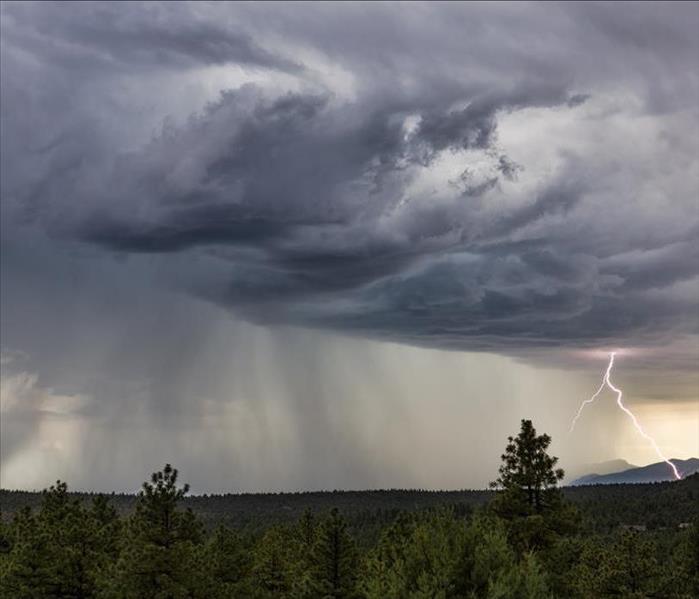 By following these five storm preparation tips, you can help protect your home and family during severe weather.
By following these five storm preparation tips, you can help protect your home and family during severe weather.
As a disaster restoration company, we understand the importance of being prepared for storms. From hurricanes to tornadoes, storms can cause significant damage to your property and put your family's safety at risk. In this blog post, we will provide you with seven storm preparation tips that can help you protect your home and loved ones.
Create a Disaster Preparedness Plan
The first step in preparing for a storm is to create a disaster preparedness plan. This plan should include information about evacuation routes, emergency contacts, and supplies you will need in case of an emergency. Make sure everyone in your household knows the plan and where to find important documents and supplies.
Secure Loose Items
High winds can turn loose items into dangerous projectiles. Therefore, it is crucial to secure any outdoor items that could become a hazard during a storm. This includes lawn furniture, potted plants, and grills. Move these items inside or anchor them down to prevent them from being blown away.
Trim Trees and Shrubs
Trimming trees and shrubs can help prevent damage to your home during a storm. Remove any dead or weak branches that could fall on your home or power lines. It's also a good idea to remove any trees or shrubs that are too close to your home.
Check Your Gutters
Your gutters play an essential role in protecting your home from water damage during a storm. Clean them out regularly to prevent debris from blocking the flow of water. If your gutters are old or damaged, replace them to ensure they function correctly.
Have a Backup Generator
Power outages are common during storms, so it's a good idea to have a backup generator on hand. A generator can help you keep essential appliances running, such as your refrigerator, medical equipment, and communication devices. Make sure to test your generator regularly and keep it fueled.
Stock Up on Emergency Supplies
It's crucial to have enough emergency supplies to last you and your family for at least three days in case of a storm. These supplies should include non-perishable food, bottled water, flashlights, batteries, a first aid kit, and any necessary medications. Keep these supplies in a designated location and make sure everyone in your household knows where to find them.
Protect Your Windows
During a storm, your windows can be vulnerable to high winds and flying debris. Installing storm shutters or boarding up your windows can help protect them from damage. If you don't have shutters, you can also cover your windows with plywood or use protective film to help prevent shattered glass.
By following these five storm preparation tips, you can help protect your home and family during severe weather. For more information on storm preparedness or if you need assistance with storm damage restoration, contact our team at SERVPRO of Lewisburg/Selinsgrove.





 24/7 Emergency Service
24/7 Emergency Service




